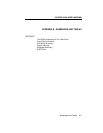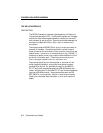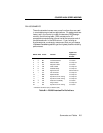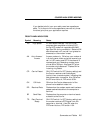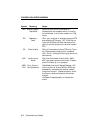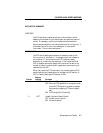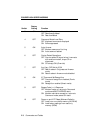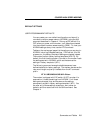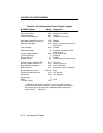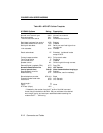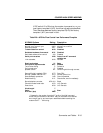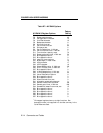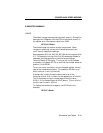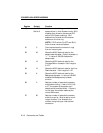
COURIER HIGH SPEED MODEMS
Summaries and Tables B-9
DEFAULT SETTINGS
USER-PROGRAMMABLE DEFAULTS
You can create your own default configuration and store it in
nonvolatile random access memory (NVRAM) using the &W
command described in Chapter 4. As long as DIP switch 10 is
OFF when you power on the modem, your defaults are loaded
into the modem's random access memory (RAM). To view your
NVRAM settings at any time, use the ATI5 command.
Tables on the next several pages list the options you can store in
NVRAM, including S-Register settings. If DIP switch 10 is ON
at power-on, the factory template 0 settings are loaded instead.
The modem has four factory setting templates (&F0−F3). By
default, the first time the modem is turned on, the modem loads
the settings stored in NVRAM, which are the same as the
settings in factory template 1 (&F1).
The following command example substitutes several user-
defined defaults for factory settings. The modem also stores the
rate, word length and parity it detects from the AT command
prefix.
AT X1 &B0 &M5 &H0 M3 &W <Enter>
The modem is shipped with DIP switch 10 OFF, so when it is
powered on it loads the settings from NVRAM. Until these
settings are changed, they are the same as the settings
permanently stored in factory settings template 1 (&F1). You
can alter any of these settings, create your own power-on
defaults, and then save them with the &W command. See
Chapter 4.



